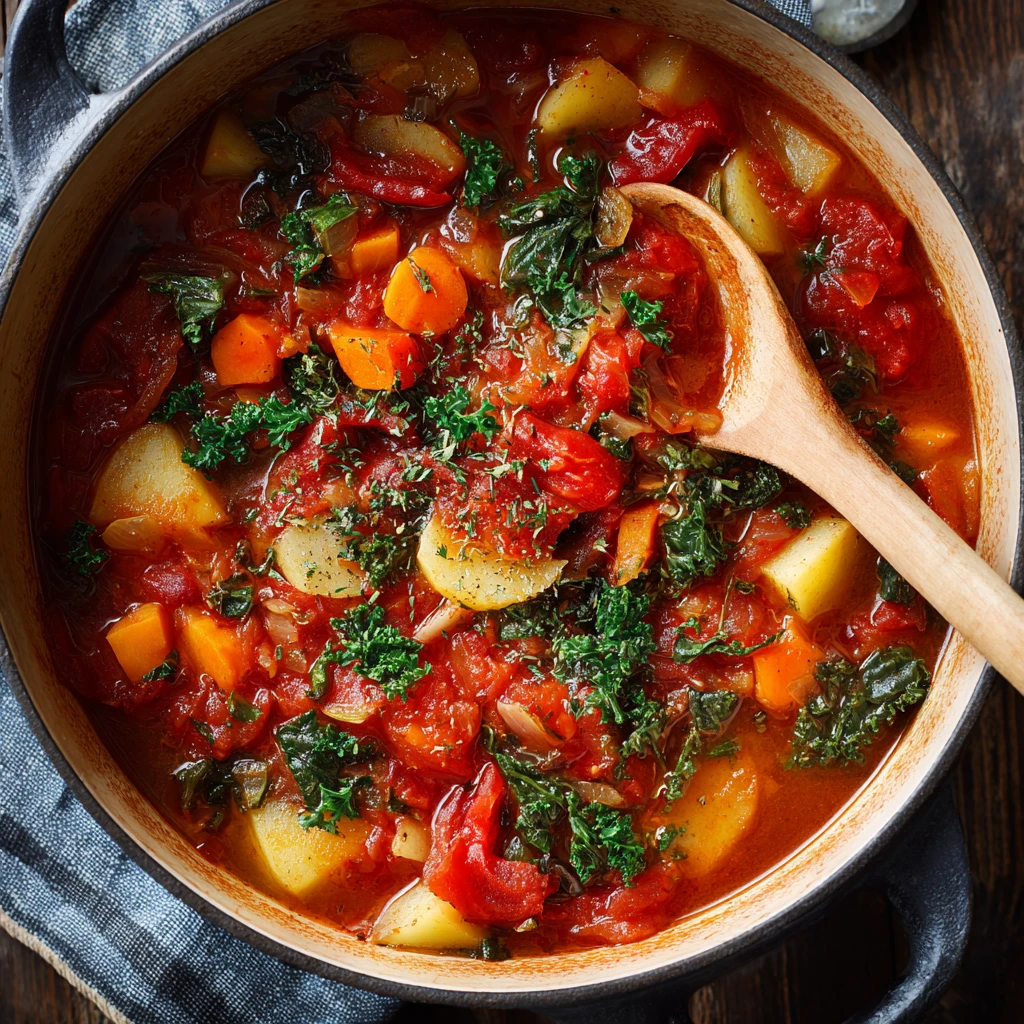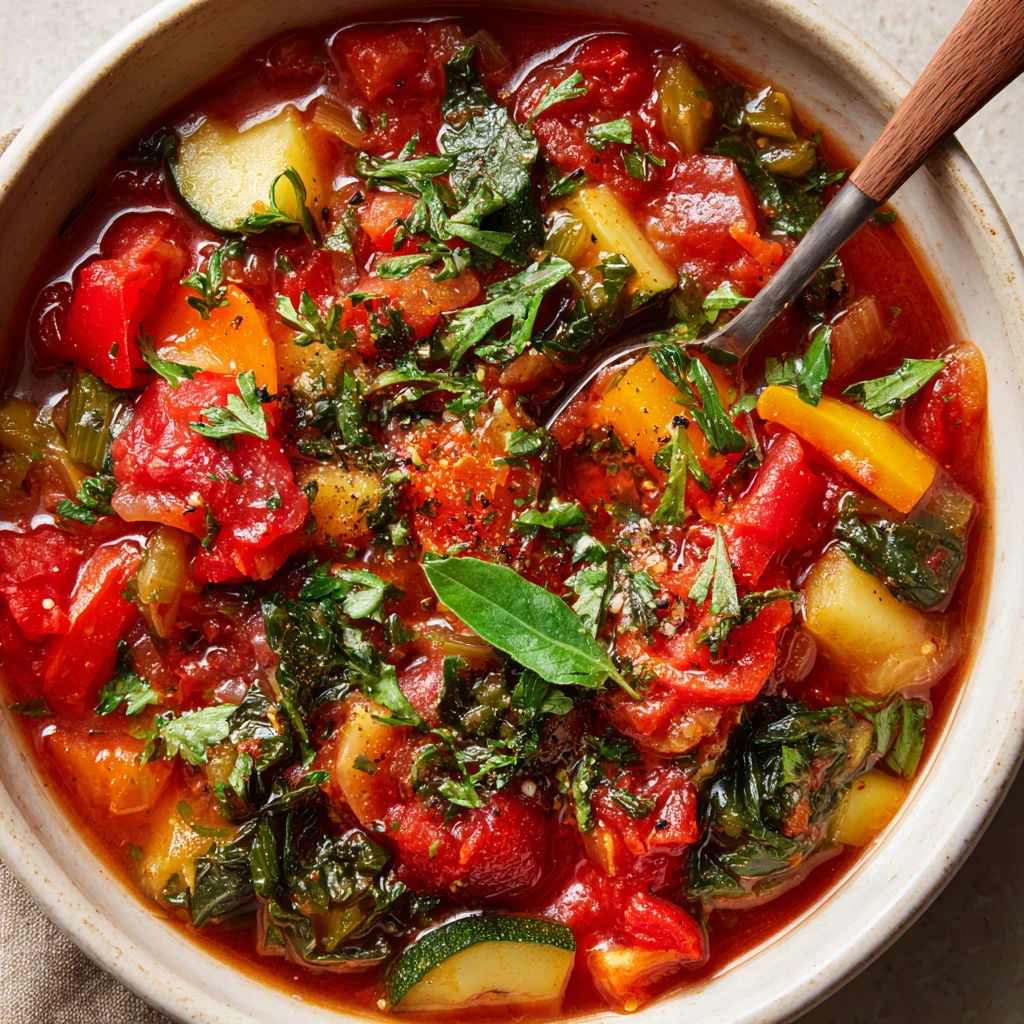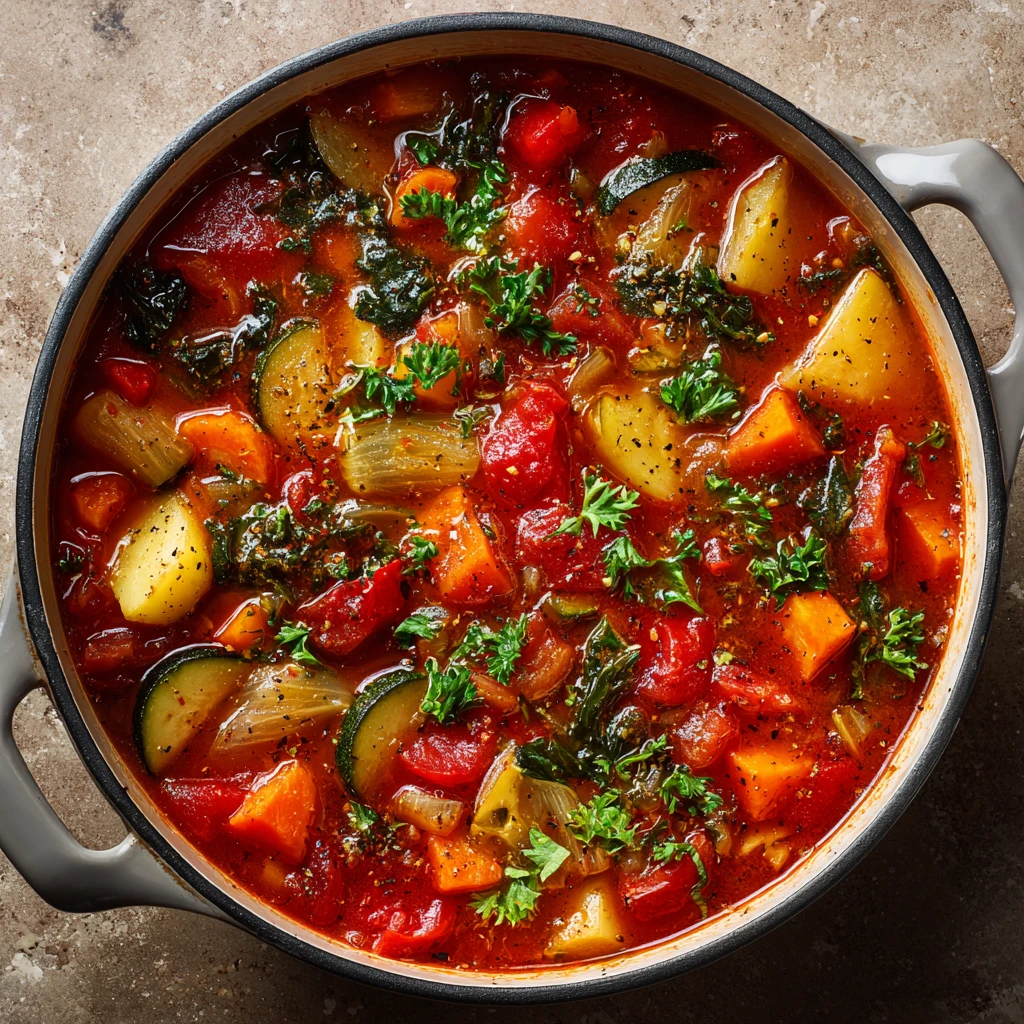Hearty Tomato Stew: A Flavorful Comfort Food Classic
Tomato stew is more than just a simple dish; it’s a warm hug on a cold day, a comforting reminder of home, and a versatile canvas for culinary creativity. This guide will walk you through everything you need to know to create the perfect hearty tomato stew, from selecting the best ingredients to mastering the cooking techniques.
The Foundation: Choosing Your Tomatoes
The heart of any tomato stew is, unsurprisingly, the tomatoes. The type of tomatoes you choose will significantly impact the stew’s flavor and texture.
- Canned Diced Tomatoes: These are a convenient and reliable option, especially when fresh tomatoes are not in season. Opt for fire-roasted diced tomatoes for a smoky depth of flavor. Look for brands that use minimal additives and preservatives.
- Canned Crushed Tomatoes: These provide a smoother base for the stew and can be used in combination with diced tomatoes for a balanced texture.
- Fresh Tomatoes: When in season, ripe, juicy tomatoes are a fantastic choice. Roma or plum tomatoes are particularly well-suited for stewing. You’ll need to peel and chop them before adding them to the pot. To peel tomatoes easily, score an “X” on the bottom, blanch them in boiling water for 30 seconds, then transfer them to an ice bath. The skins should slip right off.
- Tomato Paste: A small amount of tomato paste adds concentrated tomato flavor and richness. Be sure to cook the tomato paste for a few minutes with the aromatics to mellow its acidity.
Considerations for Tomato Selection:
- Acidity: Tomatoes are naturally acidic, which can sometimes result in a stew that’s too tart. Adding a pinch of sugar or a small amount of baking soda can help balance the acidity.
- Sweetness: Ripe, in-season tomatoes will naturally be sweeter. If using canned tomatoes, consider adding a touch of honey or maple syrup to enhance the sweetness.
- Water Content: Fresh tomatoes have a higher water content than canned tomatoes, so you may need to adjust the cooking time to allow the stew to thicken.
Building Flavor: Aromatics, Vegetables, and Herbs
Beyond the tomatoes, the aromatics, vegetables, and herbs you use will contribute layers of flavor to your stew.
-
- Aromatics:
Onion: Yellow or white onions are classic choices for tomato stew. Dice them finely and sauté them until softened and translucent.
Garlic: Add minced garlic towards the end of sautéing the onions to prevent it from burning.
Celery: Celery adds a subtle savory note and a pleasant texture. Dice it finely and sauté it along with the onions.
Carrots: Carrots add sweetness and color to the stew. Dice them finely or slice them into rounds.
-
- Vegetables:
Potatoes: Yukon Gold or red potatoes hold their shape well in stews. Dice them into bite-sized pieces.
Bell Peppers: Red, yellow, or orange bell peppers add sweetness and a vibrant color. Dice them into small pieces.
Zucchini or Summer Squash: These add a mild flavor and a tender texture. Add them towards the end of cooking to prevent them from becoming mushy.
Spinach or Kale: Leafy greens add nutrients and a touch of bitterness. Stir them in during the last few minutes of cooking.
-
- Herbs and Spices:
Dried Herbs: Dried oregano, basil, thyme, and bay leaf are classic additions to tomato stew. Add them at the beginning of cooking to allow their flavors to develop.
Fresh Herbs: Fresh parsley, basil, and oregano add a bright, vibrant flavor. Stir them in at the end of cooking.
Spices: A pinch of red pepper flakes adds a touch of heat. Smoked paprika adds a smoky depth of flavor.
Tips for Flavor Enhancement:
- Bloom Your Spices: Toasting dried spices in a dry pan for a minute or two before adding them to the stew enhances their aroma and flavor.
- Deglaze the Pot: After sautéing the aromatics and vegetables, deglaze the pot with a splash of wine or broth to loosen any browned bits from the bottom. These bits are packed with flavor.
- Season Generously: Don’t be afraid to season the stew with salt and pepper throughout the cooking process. Taste and adjust the seasoning as needed.
Adding Depth and Heartiness: Protein Options
To transform your tomato stew into a truly hearty meal, consider adding a protein component.
-
- Beans:
Cannellini Beans: These creamy white beans are a classic addition to tomato stew.
Kidney Beans: Kidney beans add a rich, earthy flavor.
Chickpeas: Chickpeas provide a slightly nutty flavor and a firm texture.
-
- Meat:
Italian Sausage: Brown Italian sausage (sweet or spicy) before adding it to the stew.
Ground Beef or Turkey: Brown the ground meat and drain off any excess fat before adding it to the stew.
Chicken: Add diced chicken thighs or shredded cooked chicken to the stew.
-
- Vegetarian Options:
Lentils: Red or brown lentils add protein and fiber and thicken the stew.
Tofu or Tempeh: Cubed and pan-fried tofu or tempeh adds a protein boost.
Choosing the Right Protein:
- Consider the Flavor Profile: Choose a protein that complements the other flavors in the stew. For example, Italian sausage pairs well with oregano and basil, while chickpeas work well with smoked paprika.
- Cooking Time: Adjust the cooking time based on the protein you choose. Beans and lentils need to cook longer than pre-cooked chicken or tofu.
The Cooking Process: From Simmer to Perfection
The key to a delicious tomato stew is to allow the flavors to meld and develop over time. A gentle simmer is the best way to achieve this.
- Sauté the Aromatics and Vegetables: Start by sautéing the onions, garlic, celery, and carrots in olive oil until softened.
- Add Tomato Paste and Spices: Cook the tomato paste for a few minutes to deepen its flavor, then add the dried herbs and spices.
- Add Tomatoes and Broth: Add the diced tomatoes, crushed tomatoes, and vegetable or chicken broth. Bring the stew to a simmer.
- Add Protein (if using): Add the beans, meat, or vegetarian protein to the stew.
- Simmer: Reduce the heat to low, cover the pot, and simmer for at least 30 minutes, or up to 2 hours. The longer the stew simmers, the more flavorful it will become.
- Add Vegetables (if using): Add potatoes, bell peppers, zucchini, or other vegetables to the stew during the last 30 minutes of cooking.
- Stir in Fresh Herbs and Greens: Stir in fresh parsley, basil, spinach, or kale during the last few minutes of cooking.
- Season to Taste: Season with salt, pepper, and any other desired seasonings.
Tips for a Perfect Simmer:
- Low and Slow: The key is to simmer the stew gently over low heat. This allows the flavors to meld without burning the bottom of the pot.
- Partial Covering: Covering the pot partially allows some steam to escape, which helps to thicken the stew.
- Stirring Occasionally: Stir the stew occasionally to prevent it from sticking to the bottom of the pot.
Serving and Enjoying Your Hearty Tomato Stew
Once your tomato stew is ready, it’s time to serve and savor the deliciousness.
- Garnishes: Top the stew with a dollop of Greek yogurt or sour cream, a sprinkle of fresh herbs, or a drizzle of olive oil.
- Accompaniments: Serve the stew with crusty bread for dipping, cornbread for a touch of sweetness, or a side salad for a light and refreshing contrast.
- Storage: Tomato stew can be stored in the refrigerator for up to 3 days or in the freezer for up to 2 months.
Variations and Customization:
- Spicy Tomato Stew: Add more red pepper flakes or a chopped jalapeño pepper for a spicier stew.
- Mediterranean Tomato Stew: Add olives, feta cheese, and a squeeze of lemon juice for a Mediterranean twist.
- Creamy Tomato Stew: Stir in a splash of heavy cream or coconut milk for a richer, creamier stew.
FAQ: Your Tomato Stew Questions Answered
-
- How do I thicken my tomato stew?
You can thicken tomato stew by simmering it uncovered for a longer period of time to allow the liquid to evaporate. Alternatively, you can stir in a slurry of cornstarch or flour mixed with cold water. Another option is to add a can of tomato paste.
-
- Can I make tomato stew in a slow cooker?
Yes, tomato stew is a great candidate for the slow cooker. Simply combine all the ingredients in the slow cooker, set it to low, and cook for 6-8 hours.
-
- What goes well with tomato stew?
Tomato stew pairs well with crusty bread, cornbread, rice, pasta, or a side salad.
-
- Is tomato stew healthy?
Tomato stew can be a healthy meal, depending on the ingredients you use. It's packed with vitamins, minerals, and antioxidants from the tomatoes and vegetables. Choose lean proteins and limit the amount of added fat to make it even healthier.
-
- Can I freeze tomato stew?
Yes, tomato stew freezes well. Allow the stew to cool completely before transferring it to freezer-safe containers or bags.




